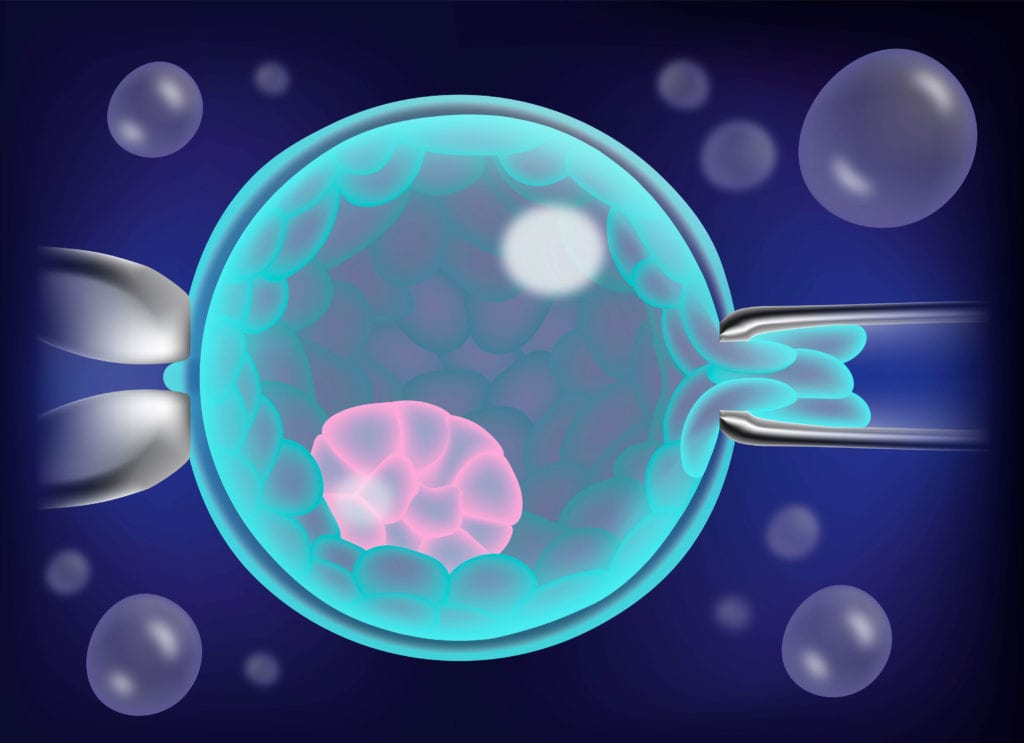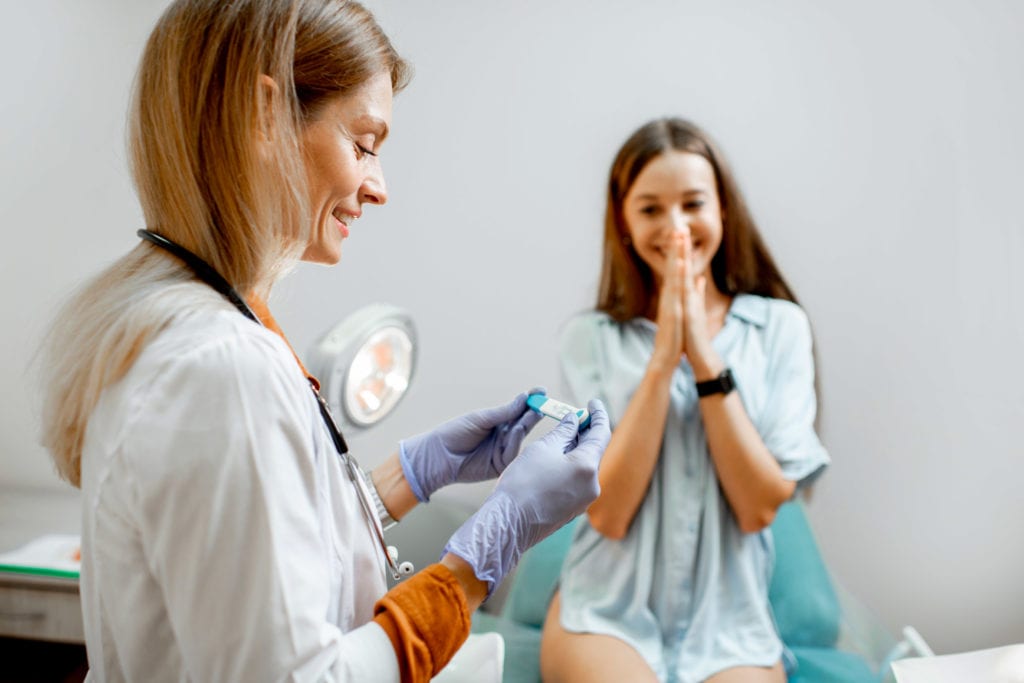ROPA METHOD
Motherhood for Female Same Sex Couples

Reception of Oocytes from PArtner (ROPA)
WHAT DOES THE ROPA METHOD INVOLVE?
The ROPA method, also known as double maternity means Partner’s Oocyte Reception and is a variant of In Vitro Fertilization for couples formed by two women. In this context, one of the women of the couple undergoes ovarian stimulation to provide the eggs, and the embryos obtained are transferred to the other woman of the couple. In this way, both women are mothers, thus achieving a total involvement of both in the maternity project.
ROPA-METHOD,
a unique and shared experience.
The ROPA-method is exclusive for couples formed by two women who want to actively participate in the experience of motherhood from the beginning. It is one of the existing techniques that can be used by homosexual couples to become mothers.
PROCEDURE



FIRST VISIT
The first step to start this project together, is to arrange a first visit with one of our fertility specialists gynecologists, to perform an exhaustive study of your medical and reproductive history, determine the necessary tests to decide what role each of the women of the couple will be able to take in this type of In Vitro Fertilization and chart together the best path to motherhood.
OVARIAN STIMULATION
In order to increase the probability of pregnancy, it is important to have more than one mature egg in the same IVF cycle. Through controlled ovarian stimulation, we are able to have a higher number of eggs, which allows us to generate embryos that will be studied in the laboratory to choose those that are most likely to give rise to a baby at home with the highest success rate. During the process of ovarian stimulation, which can last between 8 and 12 days, the mother who provides the eggs will need to go to Embriogyn to have the corresponding ultrasound scans done in order to monitor the growth of the follicles (ovarian structures that contain the eggs). When it is believed that the follicular size is adequate to provide the greatest number of mature eggs possible, the extraction of the eggs will be scheduled and the maturation of the eggs will be triggered with the administration of Human Chorionic Hormone (HCG).


ENDOMETRIAL PREPARATION
The endometrium is the layer of the uterus that must receive and host the embryo. It is equally important, therefore, that its preparation is correct. For this to be possible, it is necessary to have previously synchronized the two members of the couple so that they are in the same phase of the menstrual cycle. The objective of this synchronization is that, when the mother who provides the eggs is ready for the extraction, the mother who will receive the embryos will also have her uterus ready to receive the embryo. To do this, the recipient mother who is to receive the embryo must also follow the minimum medication schedule and have ultrasound checks.

IVF EGG RETRIEVAL
Egg retrieval or follicular puncture is a process that is performed in the center’s operating room under sedation. It is a simple procedure that takes between 15 and 20 minutes. With a needle attached to a transvaginal ultrasound probe, all the follicles are aspirated and their contents are collected in laboratory tubes.
1-2 hours after the puncture, the patient is discharged and home rest is recommended for the rest of the day.
IVF LAB
Identification and collection of the eggs
At the same time that the follicular puncture is being performed, the Embriogyn biologists are already searching the liquids obtained for the eggs that will be used to perform the In Vitro Fertilization process.
These eggs are stored in incubators to keep them in the physiological conditions that guarantee their good development. At this first point, the traceability of the gametes and future embryos is checked using the Witness system, marking the plates containing the eggs with the couple’s identification card.
Semen Preparation
In ROPA-Method, the sperm used for in vitro fertilization is a donor’s sperm. The sperm samples used are from anonymous donors from a duly accredited Sperm Bank. The samples are kept frozen and comply with the requirements established by the current law regarding cell and tissue banks. The law regulates that the Bank must ensure that the sperm are as similar as possible in terms of physical characteristics, blood group and Rh. The donation of semen is a free, anonymous and gratuitous act by a man of legal age whose psychophysical condition meets the requirements of an obligatory protocol for the study of donors.
In the Andrology Laboratory, the sperm sample will be defrosted and processed with the most suitable sperm training technique in order to select the best spermatozoa for the fertilization techniques.
Fertilization techniques
There are two techniques to carry out fertilization:
- Conventional In Vitro Fertilization (Conventional IVF): is the technique in which previously treated eggs and sperm are put together, so that fertilization occurs spontaneously and naturally.
- ICSI (Intra Cytoplasmic Sperm Injection): consists of introducing a sperm directly into the mature egg with the help of a microscope and a micromanipulation system.
Assessment of fertilization
To check that fertilization has taken place correctly, you must wait a few hours to see the first signs of genetic activation of the egg and sperm. After about 16-20 hours, you can check if fertilization has been correct by visualizing the two characteristic structures: two polar corpuscles and two pronuclei. Other possible structures that can be observed must be discarded because they do not correspond to a correct fertilization. At this point, we can already know the number of embryos generated and the biology team will contact the couple to update the information obtained.
Embryo culture, the EMBRYOSCOPE
In the days following fertilization, the embryos will be kept for 3 to 6 days in culture in the incubators. At Embriogyn we have the EmbryoScope, which is a state-of-the-art incubator that allows us to obtain images of the embryonic development at all times. Its use provides great information about the process of embryo division, helping to select the best embryo for transfer to the mother’s uterus and increasing up to 15-20% the chances of pregnancy. Every day the information on the evolution of the embryos will be communicated and transferred to the couple so that they are informed at all times of the status of their embryos.
EMBRYO TRANSFER
Once the best embryo has been selected, it must be deposited in the uterus of the recipient woman. Embryo transfer is a simple and painless procedure in which the embryo is placed at the bottom of the uterus with the help of a catheter specifically designed for this purpose. We recommend that after this process, you rest at the Center for about 15 minutes and rest relatively at home until the day after the transfer.
The embryo transfer can be of 1 or 2 embryos, depending on the characteristics of each couple. It is a consensus decision between the couple and the medical team, taking into account the history of each particular case, in order to offer the highest probability of pregnancy and minimize the risk of multiple pregnancy.


VITRIFICATION OF THE REMAINING EMBRYOS
In the case of having more good quality embryos that have not been transferred, these will be kept frozen for future use thanks to the vitrification technique.
Vitrification offers very high survival rates to the freezing/thawing process, which allows the possibility of having more than one embryo transfer with a single process of In Vitro Fertilization without the need to restart an ovarian stimulation.
PREGNANCY TEST AND ULTRASOUND
In the days following the embryo transfer (Two Weeks Wait) we recommend living a completely normal life, without great physical effort and maintaining a positive attitude. Going out, keeping busy and being distracted will help you enjoy this period more.
The pregnancy test is carried out 14 days after the date of the egg retrieval. It is a test that can be done at home, in an intimate and comfortable way, through a gestation test with the first urine in the morning.
If the result is positive, you will be given an appointment three weeks later for an ultrasound scan to check that the pregnancy is progressing correctly.

WHAT DOES THE TREATMENT INCLUDE?
- Case study and orientation
- Hormone tests during the cycle
- Medical visits and hormonal stimulation controls
- Follicular puncture and anesthesia
- IVF lab processes
- Sperm banks selected by the specialized team
- Andrology lab processes
- ICSI (Intracytoplasmic Sperm Injection)/IVF
- Embryo culture with Embryoscope technology
- Embryo Transfer
-
B-HCG pregnancy test
-
Ultrasound to verify pregnancy
-
Witness system of security and traceability of biological samples
PRICE OF TREATMENT: EUR 5415
DEMANAR CITA
És ben senzill. Només ha de posar-se en contacte amb Embriogyn i sol•licitar cita amb els nostres especialistes en l’horari que més s’adequi. En el cas que no pogueu venir en persona a la clínica també es podran concertar visites via Skype.
